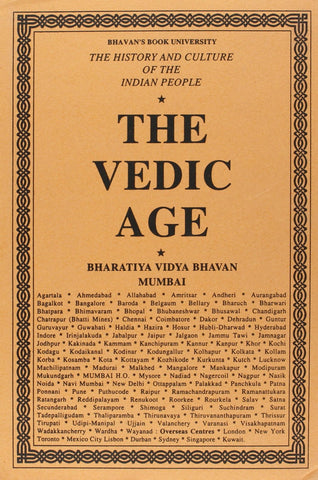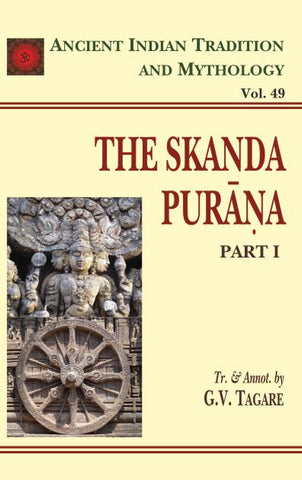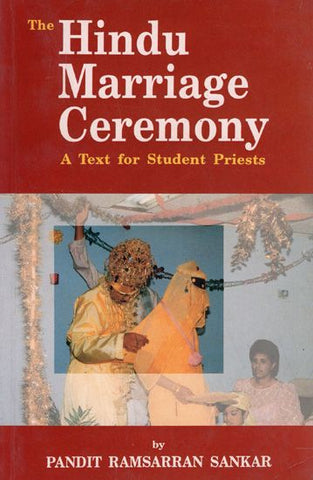Your cart is empty now.
Based on a deep analysis of the Vedic literature, the book deals with the aspects of everyday life of the Vedic people: their housing, mode of production and occupations, social organization, education, food and drink, entertainment, dress and cosmetics, etc.
Tracing the influence of Vedic learning on Upanisads and Sutra literature which have also been referred to here for details on the Vedic people and their traditions, this study focuses on the lifestyle of seers and the elite as well as that of the common people and stresses the importance of the ritualistic context in discussing aspects of daily life like preparing of food and food-eating habits, style of dressing, building of houses and so on. It deals with the Vedic people's approach to life, covering points such as their attitude towards knowledge and their quest for Brahman, their view of death and their yearning for heaven. This publication also examines the growth of the Vedic tradition from one based on the minimum requirements of life to a tradition involving refinement of things a system of writing and a complex religion based on deep philosophical study and explanation of cosmology.
The book will be useful to all the students and scholars of ancient Indian religion and culture.
About the Author :
Dr. Pranati Ghosal (1956-) is a promising scholar in the field of Sanskrit, and Vedic Studies in particular, and is presently working with the Indira Gandhi National Centre for the Arts, Varanasi. She is the co-editor of the Annual Bulletin and Proceedings of a number of seminars organized at Jnana-Pravaha. She has co-edited the recently published volume on Buddhism and Gandhara Art, Interaction Between Brahmanical and Buddhist Art, and Sakta Contribution to Varanasi. Dr. Ghosal has authored Jada-Bharata's Prasanavali: A Text on Advaita Vedanta, and several research papers which have been highly rated for their academic value and have been appeared in reputed journals and bulletins.
To peep into a society, of which no material remains are traceable, is a Herculean task but a fascinating theme. Dr. Pranati Ghosal accepted this challenge and met with big success in her brilliant work Lifestyle of the Vedic People. It is a strange juxtaposition that the Vedic people lived, had splendid vision, philosophy and views about creation, cosmos and life on earth, which have been handed down to us since time immemorial. But except for the earliest scriptures of the world, the four Vedas and particularly the Rgveda, no other account is seen. We cannot deny the fact that the Vedic culture exists in all reality despite the total absence of antiquarian remains. A remarkable phenomenon is that the castle of Indian culture stands on the solid foundation of Vedic heritage. For example, the architecture is in direct succession of the Vedic forestry workmanship and it continued till the Mauryan-Sunga age when stone was preferred for monuments. At the same time, timber was sought for residential purposes till late medieval period and it has a firm footing even now in the countryside.
The rsis endeavoured to unfold the mystery of creation (srsti-vidya) and to find its quintessence, i.e., the Supreme (brahma-vidya). This did not require materialistic attainments. Their daily life depended on perishable items, like straw, bamboo, reeds, timber, mud, etc., which were easily available in the forests. It was the aranyaka or asrama culture in true sense. When the material was destroyed or decomposed, it was replaced by fresh items, which also lasted for some decades. Under such circumstances, the permanent material remains, which make the base for cultural reconstruction, are wanting.
We, therefore, have to depend on the introspection (antah saksya) of the Vedic literature. Traditional pundits who accept the Vedic hymns as the "divine speech" have been reluctant in tracing any historical or cultural chronology in the Vedas, but those who long for deeper probe have to find their ways and try to get a glimpse of the Vedic society. The author Dr. Pranati Ghosal is a rare combination of faith and research and she has faithfully but critically analysed the Vedic literature to paint an excellent picture of the life of the Vedic people.
The work authentically informs about food and drinks, cosmetics and fashion, architecture, particularly the dwellings, professions and manufacturing, recreation, learning and teachings and other allied aspects related to the daily life of the Vedic period.
The author is silent about the use of writing in the Vedic period because of the fact that the Vedic Samhitas are known as Srutis, i.e., oral. The system of learning in the form of padapatha and kramapatha or kramaka and the figures from one to billion do suggest that the system of writing had evolved with expansion of Vedic texts.
Dr. Ghosal has cited a large number of the Vedic references to support her findings. At the same time, she has occasionally sought shelter of the early Upanisads and Sutra literature also, where the Vedic references are wanting. After all, the Vedic traditions were followed for long. The book bears the stamp of brilliant rendering, in-depth study of the subject and maturity of scholarship. I hope this will be warmly received by scholars and researchers. Let me wish all the best with this hymn:
IT gives me pleasure to place before readers the Lifestyle of the Vedic People, which was originally entitled Everyday Life in the Vedic India and was submitted as a PhD dissertation at the Rabindrabharati University, Kolkata in the year 1997. After a long interval I hope the same will be able to draw the kind attention of the scholarly world especially interested in the study of Vedic Culture.
Though religious and philosophical ideas occupy the major part of the vast Vedic literature, information on people's lifestyle also found scattered in them have been collected and processed in order to have a complete picture of the daily life in the Vedic age because details of people's lifestyle is reflected in their daily activities. Original Vedic texts are the primary sources used for the present investigation. Apart from it, all the related works and secondary literature dealing with daily life of ancient people have been consulted as far as possible. I am afraid, a few such may have been missed, most probably because of their non-availability. I regret my inability.
The result of the investigation is presented in the form of eight chapters dealing with:
1. Food Habits
2. Dress Arrangements
3. Housing Systems
4. Modes of Production and Other Occupations
5. Entertainment
6. Education
7. Social Life
8. View of Life
They are preceded by an Introduction and followed by a Bibliography.
Ceremonial thanksgiving is not befitting the Indian tradition. But I must express my sense of gratitude to the forerunners, whose works I have utilized to my benefit. I shall remain ever grateful to my revered teacher Dr. S.c. Chakrabarti, Professor and Director, School of Vedic Studies, Rabindrabharati University, whose kind supervision and precious instruction helped me to reach the goal. I am indebted to all the teachers of the Sanskrit Department, Rabindrabharati University, for their valuable suggestions at every stage of my work. Many thanks are credited to IGNCA authorities, who provided me leave facilities generously. Cordial thanks are due to my friends for their generous help rendered to me. I remain obliged to the School of Vedic Studies, Rabindrabharati University, for providing me the Library facilities. I am thankful to Prof. Bishwanath Bhattacharya for rendering valuable instructions at the stage of revising this dissertation before publication. My sincere regards are credited to Prof. R'C. Sharma without whose active initiation the work would have never seen the light of the day. He has been kind enough to write a Foreword to the present work. I am equally thankful to Sri Susheel Kumar Mittal of D.K. Printworld, New Delhi, who has taken a keen interest in publishing the work.
I would be blessed if my effort serves any purpose in the scholarly world.
THE present work aims at a study of the Lifestyle of Vedic People, as it has been depicted in the Vedic Literature. Though the Vedas are usually regarded as the ultimate source book of Hindu religion, yet they contain information on the life of people and the material aspects of their culture. Hence, it is an investigation into their way of life, viz., food, clothing, etc. Though the pursuits of Vedic people like those in other countries in various ages started with the minimum requirements of life, it will be discussed how the sphere of attention of people broadened into the refinement of things, which ultimately led them to the height of Supreme Bliss.
From the survey of previous works, we find that daily life or life-pattern of common people appears as an interesting topic to the scholars. They have selected this as the subject of their research covering different periods of different civilizations. The works, which handled every day life, may be classified into three groups:
1. To the first group belong the works, which have been entirely devoted to the discussion of every day life.
At first, we should mention Daily Life in Ancient India by Jeanine Auboyer. Jeanine, the curator of Musee Guimet in Paris had contributed a lot on this subject. In the daily life series she had at least 7/8 works, viz.:
(i) Daily life of Aztec on the eve of Spanish Conquest,
(ii) Daily life in the Vienna of Mozart and Schubert,
(iii) Daily life in Palestine at the time of Christ,
(iv) Daily life in Rembrandt's Holland,
(v) Daily life of the Etruscans,
(vi) Daily life in the French Revolution, and
(vii) Daily life in Greece at the time of Pericles.
The subject matter and time of the said works are quite clear from their titles. Daily Life in Ancient India is an addition to this series. In this book, Auboyer has covered nine centuries ending with political upheavals of the seventh century AD. Throughout the work, the authoress has evoked fascinating complexities of India's ancient epoch with its caste-system, its endless ritual and the ceremonial nature of human relations even in the matters of love. In order to reconstruct daily life of this period, she mainly depended on the Ramayana, the Mahabharata, the Arthasastra, the Kamasutra, Smrti texts, Puranas, Raghuvamsa, Kadambari, Buddhist texts (e.g., Dhammapada, Mahavagga, Mahavastu, Atthasalini, etc.). In her work, Auboyer has described the daily routine of a fashionable young man (Part III, Ch.l), a king's daily life, lifestyle of the members of royal harem (Part III, Ch.2), that of the monks at monasteries (Part II, Ch.4), etc.
Everyday Life in Early India by Michael Edwards is another work on the same topic. Edwards, in his work, has tried to focus on everyday life of early India covering a period of roughly thousand years from the third century BC up to the eighth century AD. Edwards himself considered this work to be an introduction only to a complex and fascinating subject. He tried to give a description of everyday life of this period mainly from the Epics, the Kamasutra, the Arihasastra and Jataka tales. The work also contains a chapter named "The Daily Round." In this chapter, the author has described the construction of village and city life (including food, dress, housing and amusement). V.S. Agrawala in his India as known to Panini has given a pen-picture of daily life of the Paninian age. In this book, Prof. Agrawala has discussed on geography, social life, education, economic, political and religious condition of the said period. Life in Ancient India by Bandana Mukhopadhyay is another work in this daily life series. Her work is based on Dhammapada: Atthakatha. B.C. Law in his work India as described in the Early Texts of Buddhism and Jainism has covered a specific age to describe daily life. J.C. Jain in India as depicted in Jaina Canons has dealt with the subject based on J aina texts.
2. To the second group, we find the works where everyday life has been discussed as a part of the main work. As for example, we may mention here the name of Prof. Ram Gopal's India of the Vedic Kalpa Suiras. In this work, an entire Chapter (VIII) has been devoted to describe the everyday life of the Sutra period.
In this group, we find another work, i.e., Wonder that was India by A.L. Basham. In this book, Basham has discussed Indian History from the pre-historic age up to the medieval age (Vijayanagara Empire, i.e., roughly sixteenth century AD). In this book, everyday life has been discussed as a part of the main work. As because this book has covered an unusually long period, Basham has discussed the topic in a nutshell. In this chapter, he has tried to give a rough idea about daily life in the city and villages. In doing so, he has touched upon only. some of its various aspects, e.g., agriculture and stock- breeding, amusement, food and drink, guild, technical achievements, trade and finance, etc. But a notable point here is that as regards information on the Vedic period, there are a few remarks only. Discussions are mostly based on the Epics, Jataka literature and in some cases on the travellers' accounts.
3. In the third category, we find some work, which has not discussed everyday life directly, but some aspects, which are very much concerned with people's everyday life. The Common Life in the Rgveda and Atharvaveda by Chhanda Chakraborty belongs to this group. The subject and period of the work has been clear from the title. The authoress has dealt with different aspects of common life as they have been reflected in these two Samhitas. Popular beliefs and superstitions, food and drink, manners and customs, amusements, etc., have been stressed in this work. Jogiraj Basu in his India of the Age of Brahmanas has given a description of Indian society of Brahmanic age, including its political and religious aspects. In doing so, he has discussed caste system, women and marriage, education, music and dance, games and sports, dress and decoration, food and drink, utensils and tools, agriculture and pasturage, trade and commerce, house building, transport, various sacraments, different forms of sacrifice, members of royal family and their position, etc.
Apart from this, many articles have appeared covering different aspects of everyday life, e.g., C.P. Majumdar contributed a series of articles under the title "Man's Indebtedness to the Plants" dealing with food, dress and other personal requisites in ancient India. All these topics are closely related with people's everyday life. These articles have been published in different volumes of the journal Indian Culture in 1934-37.
But in none of these works the everyday life of the Vedic people has been treated as the main thrust area; only some matters concerning people's life have been discussed in every case. Therefore, a systematic study of the said topic (mentioned above), is still demanded. Accordingly, the present work was undertaken.
The scope of the present, work is limited to a study of the life-pattern of the Vedic people based on their everyday life. The primary sources used for the investigation comprise the entire Vedic literature, i.e., from the ~gveda up to the Upanisads. Now, as regards the daily life of the Vedic people, at first we must confess that, as because the Vedic texts are not daily chronicles of that period, it is difficult to get a complete picture therefrom.
Everyday life has been portrayed in some later texts more distinctly. Detailed routine of a king's daily life has been recorded in the Manu Samhita (7.145-225). Similarly, daily life of a fashionable young man (belonging to the Gupta period) has been traced in the Kamasutra of Vatsyayana (1.4.8) and the Susruta Samhita: (Cikitsasthana, 24th Ch.). But no such attempt was made in the Vedic texts. Nor is it expected either; for the Vedic literature was principally religious in content and their culture was mainly concerned with religion and philosophy of the Vedic people. That is why, in their literature also, discussion on sacrificial matters has been emphasized. Whatever they told, be it about their food preparation or style of dress/ornaments or hair-fashioning or building of house, they have discussed everything in a ritual context. Therefore, in all aspects of human life, information has been culled from the ritual contexts. Because all the religious and ritual practices are but man's own lifestyle.
As a general principle, in all the ages man offers food to gods according to his own likings. The remnants of sacrificial oblations are partaken of by the sacrificer and his priests. Therefore, an idea of the food habit of Vedic people may be formed from the nature of oblations, offered at Vedic sacrifices. In a few cases, however, Vedic texts indicate differences in god's food from the human food (e.g., sura - TB, 1.3.3.3; purodasa - SB, 1.2.2.9).
In some cases, in order to discuss various sacrifices and their preparations Vedic texts (especially the Brahmana texts) occasionally recorded some observations on human practices too, just to show their difference from the divine ones. In the context of sacrificer's initiation in the Agnistoma sacrifice, the 5B refers to human practices with regard to various activities. In the human practice, the activities like trimming of nails, combing hair, shaving, anointing eyes, everything starts from the left side, i.e., just in the reverse order of divine / ritual fashion. Similarly, while describing the preparation of Somayaga, the 5B, has discussed construction of cart-shed (havirdhana), tent (sadas), hearths (dhisnya), etc. With reference to this context, occasional remarks on the human practice of constructing hut, hall, etc., have been traced in the SB (3.1.1.7, 3.6.1.23).
From the study of Vedic texts, we find that mostly seers and elite have been represented. Description of common people's (vaisya and sudra community) lifestyle was not their primary concern. So, these people are not well represented in the Vedas; and the picture of their everyday life is not clearly reflected here either. An attempt will be made in the subsequent chapters to portray the lifestyle of common people on the basis of materials gleaned from Vedic literature.
As already mentioned references have been taken mainly from the Samhita, Brahmana, Aranyaka and Upanisads. But whenever it is felt necessary for fuller details of the topic, materials have been collected from the Sutra texts as well.
| Foreword by R.C. Sharma | vii | |
| Preface | ix | |
| Key to Transliteration | xv | |
| Abbreviations | xviii | |
| Introduction | 1 | |
| 1. | Food Habit | 9 |
| Grains | 10 | |
| Barley | 11 | |
| Wheat | 11 | |
| Rice | 11 | |
| Milk | 15 | |
| Milk Products | 16 | |
| Fruits and Vegetables | 18 | |
| Meat | 19 | |
| Fish | 20 | |
| Preparation of Food | 21 | |
| Use of Cooking Spices | 22 | |
| Utensils / Implements | 23 | |
| Drinks | 25 | |
| Food Prescribed on Sacrificial Occasions | 30 | |
| First Food to the Child | 31 | |
| Manners Concerning Food | 32 | |
| Restrictions and Prohibitions on the Use of Food | 32 | |
| 2. | Dress Arrangement | 37 |
| Dress: As a General Term | 38 | |
| Varieties of Dress | 38 | |
| Variety of Materials Used for Dress | 41 | |
| Use of Different Dresses on Different Occasions | 42 | |
| Ornaments | 46 | |
| Variety of Materials Used for Ornaments | 49 | |
| Hair-dressing | 50 | |
| Cosmetics | 52 | |
| 3. | Housing System | 57 |
| Lay-out of the House / Building Plan | 63 | |
| Construction of the House | 65 | |
| House hold Furniture | 69 | |
| 4. | Mode of Production and Other Occupations | 73 |
| Agriculture | 73 | |
| Importance of Agriculture | 74 | |
| Stages of Cultivation | 75 | |
| Farmers | 79 | |
| Agricultural Implements | 80 | |
| Cattle Rearing | 81 | |
| Trade & Commerce | 83 | |
| Other Modes of Production | 86 | |
| Hunting | 87 | |
| Fishery | 89 | |
| Vocations Related to Cottage Industries | 90 | |
| Weaving | 90 | |
| Smith | 91 | |
| Carpentry | 92 | |
| Pottery | 93 | |
| Miscellaneous Vocations | 96 | |
| Barber & Washer | 96 | |
| Occupation related with House-Hold | 97 | |
| Occupation related to the King / Administration | 98 | |
| Occupation related to Conveyance | 100 | |
| Professions related with Music and Dance | 100 | |
| Forbidden Professions | 102 | |
| 5. | Entertainment | 103 |
| Dicing | 104 | |
| Mythological Background of Dicing | 105 | |
| The Game Its Classification | 109 | |
| Dice: Its Material | 114 | |
| Relation Between Names of Ages and Dice Racing | 115 | |
| Chariot Race & Horse Race | 115 | |
| Mythological Background of Races | 116 | |
| Racing Horse | 118 | |
| Contents of Skill / Pre-eminence | 121 | |
| Plays / Games | 121 | |
| Lottery Contest | 122 | |
| Hunting | 122 | |
| Cultivation of Fine Arts | 122 | |
| Music and Dance | 122 | |
| Dance and Music in Social Life | 127 | |
| Musical Instruments | 130 | |
| Employment of Music and Dance in Rituals | 134 | |
| People's Attitude towards Music & Dance | 143 | |
| 6. | Education | 145 |
| Students: Brahmacarin | 147 | |
| Upanayana | 148 | |
| Tenure of Studentship | 149 | |
| Duties of a Student | 149 | |
| Study | 150 | |
| Subjects of Study | 150 | |
| Time and Place of Study | 152 | |
| Holidays | 153 | |
| Eligibility of being a Student | 154 | |
| Student's Manners | 155 | |
| Teachers | 156 | |
| Duties of a Teacher | 159 | |
| Teacher's Desire for Students | 160 | |
| Convocation | 161 | |
| Relation between Teacher and Students | 162 | |
| System of Free Education | 163 | |
| Methods of Study and Teaching | 164 | |
| Variety of Institutions | 169 | |
| Women's Education | 172 | |
| Education for Common People | 173 | |
| 7. | Social Life | 179 |
| Classification of Society Based on Four Classes | 179 | |
| Origin of Four Castes | 180 | |
| Characteristic Features and Occupations | 182 | |
| Right to the Vedic Studies | 183 | |
| Four Orders of Life | 186 | |
| Studenthood | 187 | |
| Daily Routine of a Student | 188 | |
| Domestic Life (Garhasthya) | 192 | |
| Necessity of Domestic Life | 192 | |
| A Pen-Picture of Domestic Life | 194 | |
| Exceptions | 197 | |
| Duties of Householder | 198 | |
| Agnihotra | 198 | |
| Pancamahayajna | 204 | |
| Balikarma | 207 | |
| Vanaprastha and Samnyasa | 209 | |
| 8. | Views of Life | 215 |
| Srauta Sacrifices | 218 | |
| Grhya Rites | 224 | |
| Death as Viewed by People | 225 | |
| Desire for Heaven | 230 | |
| Quest for Supreme Knowledge | 233 | |
| Pupilage | 236 | |
| Its Tenure | 237 | |
| Eligibility | 239 | |
| Result: Liberation | 240 | |
| Bibliography | 247 | |
| Index | 255 |
Delivery and Shipping Policy
- INTERNATIONAL SHIPPING
- Rs.1000-1100/kg
- ESTD. Delivery Time: 2-3 weeks (depending on location)
- Bubble Wrapped with Extra Padding
- NATIONAL SHIPPING
- NCR: Rs. 30/half kg
- Standard: Rs. 80/half kg
- Express shipments also available on Request
- ESTD. Delivery Time: Ranging from 1-4 days up to 7 business days (Depending on your choice of Delivery)
- TRACKING
- All orders; national or international, will be provided with a Tracking ID to check the status of their respective orders
- Depending on the Shipping Service, Tracking ID may be used on their respective tracking portals
Frequently Asked Questions (FAQs)
Domestic Shipping: 3-4 Days (after shipping)
International Shipping: 1-2 weeks (based on your location)
You will receive an email once your order has been shipped or you can email us if you didn't receive tracking details (info@mlbd.co.in)
Every book that we sell is the latest edition except all the rare books
Yes, we do provide free shipping, only on domestic orders (within India) above Rs.1500


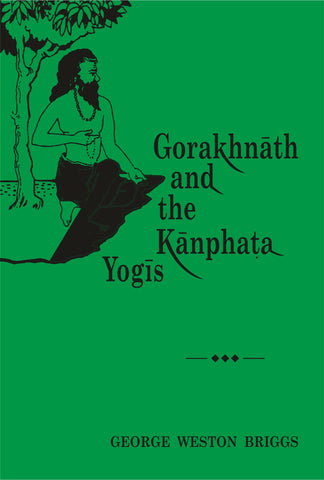
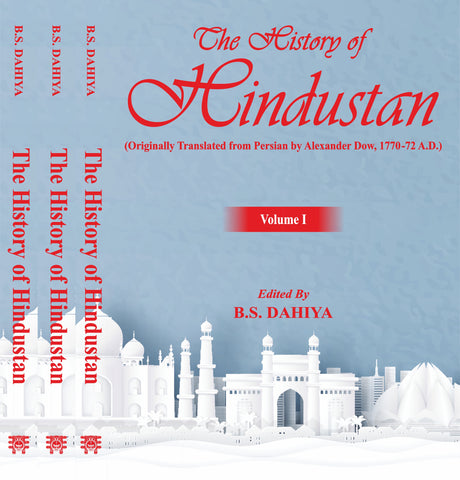
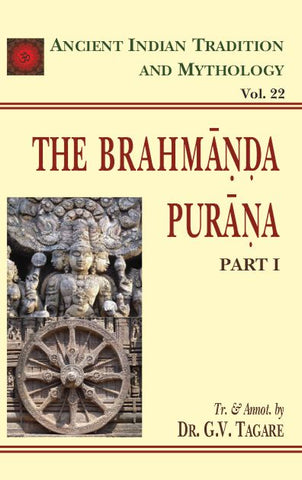
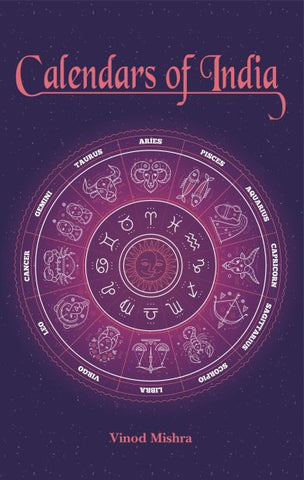
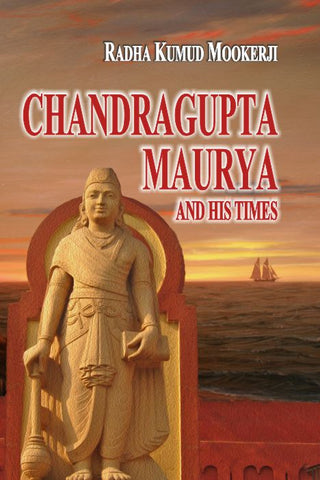
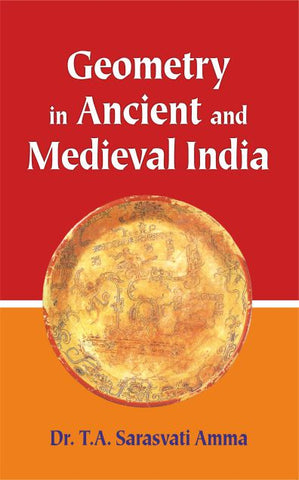
![A HISTORY OF INDIAN PHILOSOPHY [5 VOLUMES] by Surendranath Dasgupta](http://www.motilalbanarsidass.com/cdn/shop/products/HISTORYOFINDIANPHILOSOPHY_large.jpg?v=1675238163)
